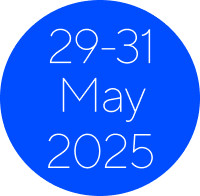Clinical seminar: Performing spinal manipulation and mobilisation or not? A perspective on managing paediatric clients (CS-07)
Chair: Anita Gross (Canada)
Speakers: Nikki Milne (Australia), Jenifer L Dice (United States), Babara Connolly (United States)
Learning objectives
- Apply the joint IFOMPT-IOPTP position statements to case-stimulated clinical vignettes.
- Differentiate the use of spinal manipulation or mobilisation for managing musculoskeletal and diverse non-musculoskeletal conditions in infants, children and adolescents.
- Apply clinical reasoning when balancing clinical judgements against adverse events and suitable clinical outcome measures when considering use of spinal manipulation-mobilisation versus other valid clinical care options.
Session outline
Using case-stimulated recall and the International Classification of Functioning, Disability and Health (ICF) Framework, we plan to stimulate clinical reasoning, debate, and discussion on paediatric spinal manipulation and mobilisation, the related beneficial or harmful effects, and the recent IFOMPT/IOPTP Position Statements (1, 2). We will briefly summarise the IFOMPT and IOPTP Position Statement developed using an evidence-to-decision framework: 1. Scoping review (3) with the aim of identifying and mapping the available evidence regarding effectiveness and harms of spinal manipulation and mobilisation for infants, children and adolescents; 2. Psychometric properties review on clinical outcome measures (4, 5) which investigated the clinometric properties of outcome measures identified in the scoping review; 3. 3-Round Delphi study of international physiotherapy experts (6, 7) aimed to describe current practice, , and perceptions of peers in the field of orthopaedic manipulative therapy and paediatric physiotherapy regarding appropriateness of spinal mobilisation and manipulation in infants, children, and adolescents.; 4. Position Statements based on an evidence-to-decision summative analysis (1). Participant perspectives from a broader survey will be noted (8).
The international taskforce findings will be highlighted using infant (0-2 years), child (3-12 years) and adolescent (13-18 years) case reports, interactive group polling, and discussion as follows:
- Infant case – musculoskeletal condition: torticollis
- Infant case – non-musculoskeletal condition: colic, cerebral palsy, scoliosis
- Adolescent spinal pain – musculoskeletal condition: low back pain
- Child spine pain – musculoskeletal condition: neck pain
The session will end using panel discussion with Q & A session about spinal manipulation-mobilisation:
- The reasons physiotherapists should or should not manipulate or mobilise the paediatric population and valid alternate Clinical Practice Guideline care pathways including consenting and legal issues in various countries.
- The type of research that needs to be conducted in the future to advance our knowledge of spinal manipulative therapy in the paediatric population.
Session delivered by: International Federation of Manual and Musculoskeletal Physical Therapists, International Organisation of Physiotherapists in Paediatrics
References
- Gross AR, Olson K, Pool J, Basson A, Clewley D, Dice JL, Milne N. Spinal manipulation and mobilisation in paediatrics – an international evidence-based position statement for physiotherapists, Journal of Manual & Manipulative Therapy, 2024. 32:3, 211-233, https://doi.org/10.1080/10669817.2024.2332026
- IFOMPT & IOPTP, Paediatric Manipulation and Mobilisation Evidence-based Practice Position Statement; London, UK, May 27, 2024.
- Milne N, Longeri L, Patel A, Pool J, Olson K, Basson A, Gross AR: Spinal manipulation and mobilisation in the treatment of infants, children, and adolescents: a systematic scoping review. BMC Pediatrics 2022, 22(1):721. https://doi.org/10.1186/s12887-022-03781-6
- Hayton T, Gross A, Basson A, Olson K, Ang O, Milne N, Pool J. Psychometric properties of clinician-reported and performance-based outcomes cited in a scoping review on spinal manipulation and mobilization for pediatric populations with diverse medical conditions: a systematic review. Journal of Manual and Manipulative Therapy 2024. 32(3), 255-283. https://doi.org/10.1080/10669817.2023.2269038
- Hayton T, Gross A, Basson A, Olson K, Ang O, Milne N, Pool J: Psychometric measurement properties of patient-reported and observer-reported outcome measures for spinal mobilisations and manipulation on paediatric subjects with diverse medical conditions: A systematic review. Journal of Manual and Manipulative Therapy 2024. 32(3), 234-254, https://doi.org/10.1080/10669817.2023.2281650
- Dice JL, Brismée JM, Froment FP, Henricksen J, Sherwin R, Pool J, Milne N, Clewley D, Basson A, Olson KA, Gross AR. Spinal manipulation and mobilisation among infants, children, and adolescents: an international Delphi survey of expert physiotherapists. Journal of Manual & Manipulative Therapy. 2024 32(3), 284–294. https://doi.org/10.1080/10669817.2024.2327782
- Dice JL, Brismée JM, Froment FP, Henricksen J, Sherwin R, Pool J, Milne N, Clewley D, A. B, Olson KA, Gross AR (2024). Perceived factors and barriers affecting physiotherapists’ decision to use spinal manipulation and mobilisation among infants, children, and adolescents: an international survey. Journal of Manual & Manipulative Therapy, 2024. 32(3), 295–303. https://doi.org/10.1080/10669817.2024.2363033
- Lumasag M, Gross AR, Clewley D, Santaguida P. Information needs for people with neck pain seeking physiotherapy neck manipulation or mobilization: An Exploratory Study. Journal of Manual & Manipulative Therapy, 2024 (submitted).
View all clinical seminars
See the 11 clinical seminars to be presented at congress.
View all speakers
Find out who the key speakers at congress will be.
Registration
View the registration fees and register for congress.




